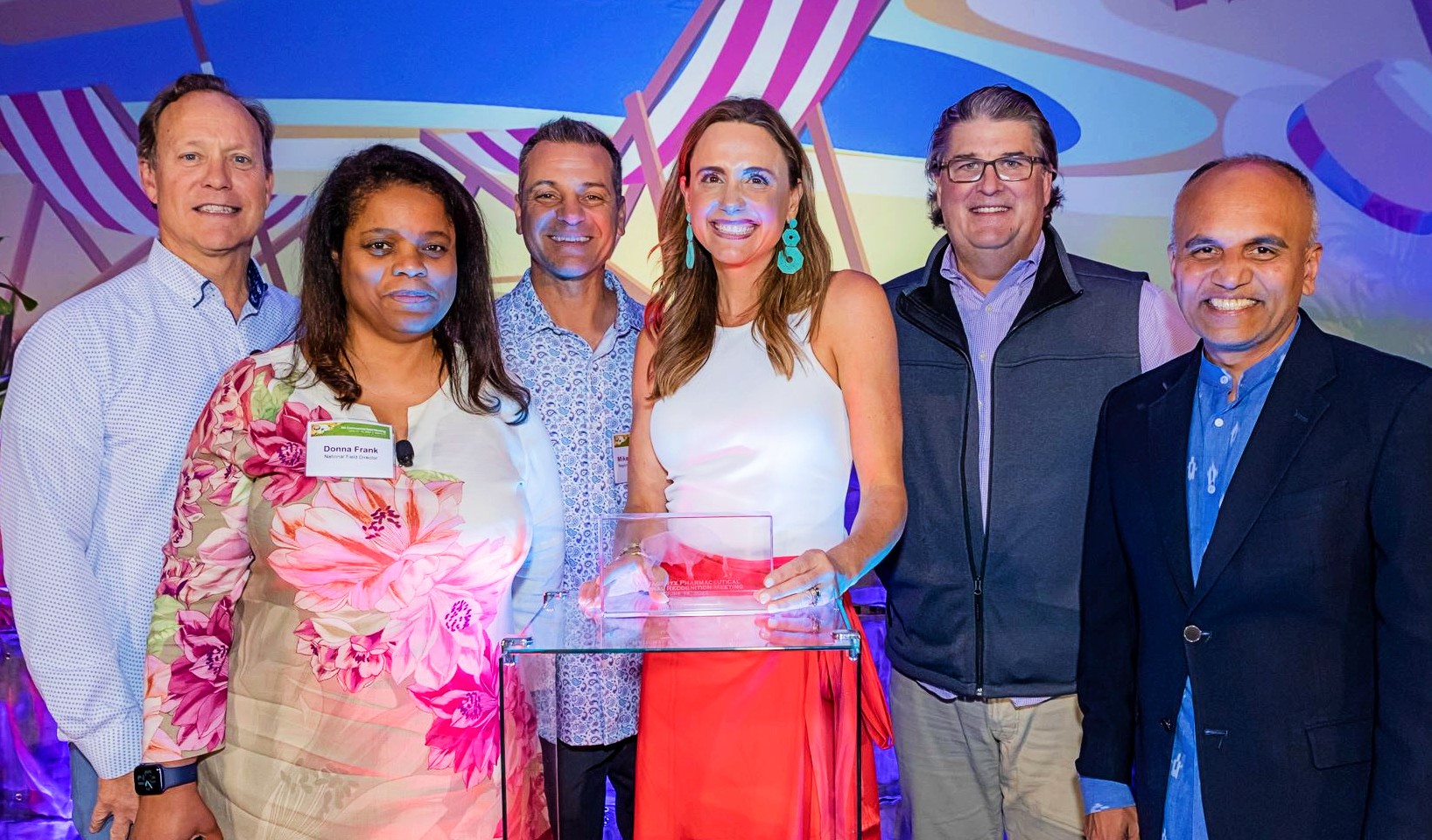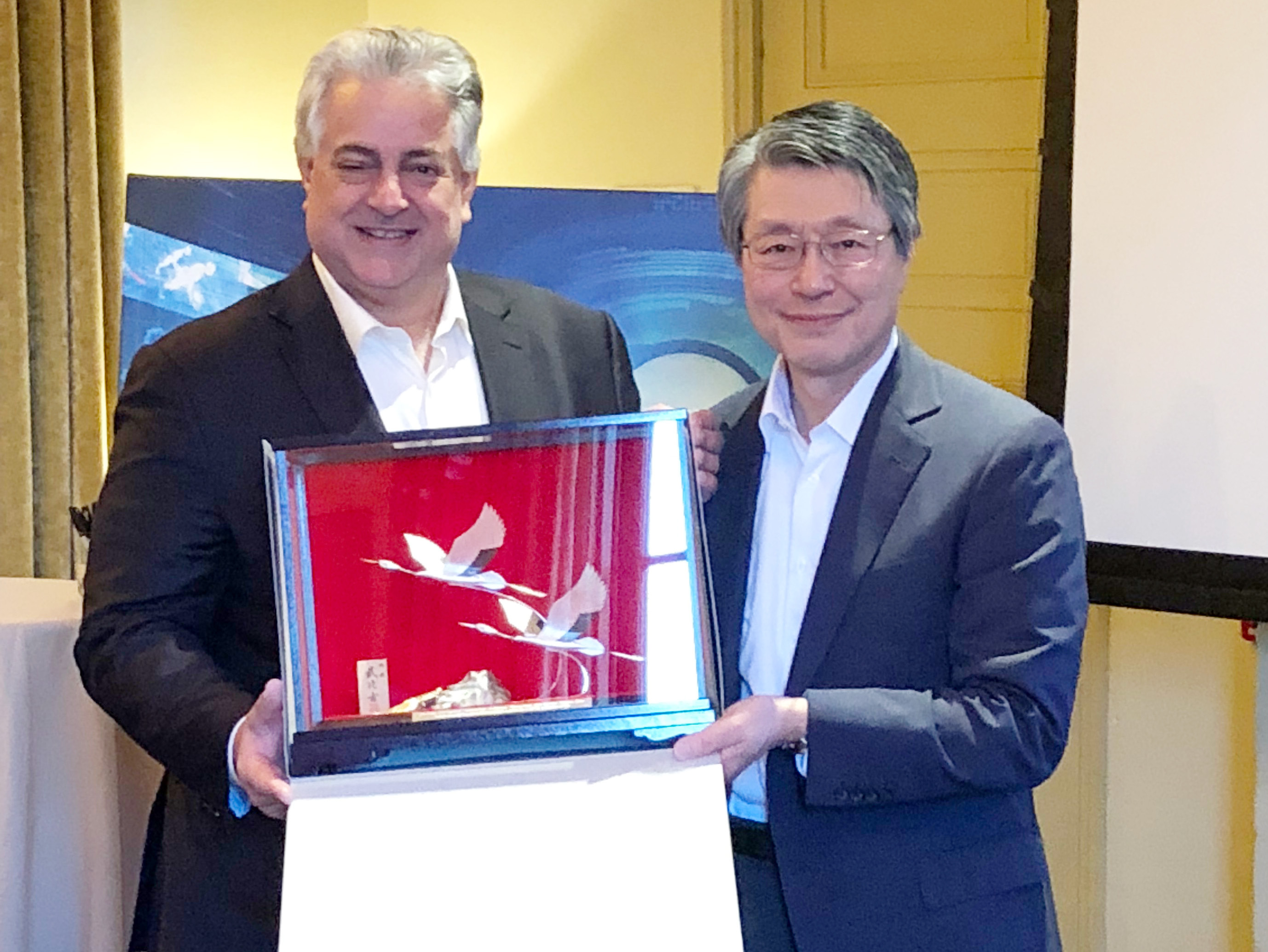Since 2013, Ultragenyx and Kyowa Kirin Co., Ltd. have partnered on the development and commercialization of Crysvita® (burosumab-twza). In the span of ten years, the drug has moved through late-stage development with approvals in two rare genetic bone disorders and reached thousands of patients around the world. In 2022, 4.5 years after launch, the global impact of the product was cemented as it reached blockbuster status.
Crysvita is the first-ever treatment approved for X-linked hypophosphatemia (XLH), a hereditary, lifelong condition. It is caused by insufficient phosphorous in the body, which can weaken bones and lead to rickets and bowed legs and shortened stature in children, and pain, stiffness, fractures and limited mobility in adults. It impacts 1 in 20,000 people worldwide.
I sat down with Ultragenyx’s Ali Skrinar, VP of endpoint development, and Vimal Srivastava, SVP of business development and alliance management, to learn what took place behind the scenes that led to one of the most successful rare disease drug launches of all time.
Carolyn: Why did Ultragenyx partner with Kyowa Kirin on this program?
VIMAL: In 2013, Ultragenyx was very much a start-up. We had about 30 people on the team, including seasoned veterans with deep expertise in rare disease drug development. Kyowa Kirin had a promising drug and needed a team with rare disease expertise to bring it over the finish line, and they were willing to give us a chance. We at Ultragenyx were eager for this opportunity and took the responsibility very seriously because we understood the gravity of this debilitating disease. Additionally, a large pharmaceutical company trusting a startup with such a critical asset was not typical, and we were committed to being good stewards of this program.
We could tell this treatment could be a game-changer for the XLH community.
ALI: We could tell this treatment could be a game-changer for the XLH community if we had the right development and regulatory strategy. There were leaders in both organizations who believed in this medicine – and wanted to drive its development as quickly as possible to meet patient needs. With that in mind, the partnership deal with Kyowa Kirin put us in charge of Phase 3 clinical development and held us to a series of aggressive timelines. We had to be incredibly efficient with our decision making to ensure we didn’t fall behind on our milestones. I think that efficiency mindset helped establish our company culture of acting thoughtfully but expeditiously on behalf of people living with rare disease.

Photo: Several members of the Ultragenyx commercial team who helped Crysvita achieve global impact, (L to R: Ernie Meyer, EVP and chief human resources officer; Donna Frank, exec. director, US Crysvita commercial field; Mike Della Barba, regional director; Lindsay Lackey, UltraCare liaison; David Libby, SVP and region head for North America and Sunil Karnawat, VP of Crysvita marketing and sales)
Carolyn: Tell me about how the Ultragenyx team initiated collaboration with the XLH community.
ALI: As soon as we got started on the program, we began receiving letters from adult patients who had received treatment during the Phase 2 study led by Kyowa Kirin. At that time, they had been off treatment for several months and had returned to their pre-treatment condition, only now they knew what it was like to feel better. They sent us moving, sometimes emotional letters about how much relief they had experienced while on the investigational treatment, and how it had improved their symptoms and quality of life. These letters were so impactful, we would read them aloud to the team to push everyone to work toward our goal of making this drug available to people living with XLH.
At the heart of it, we listened to the patients and they told us what they needed.
We also built a strong relationship with the patient community through the XLH Network – they trusted us to bring this treatment forward and we followed through. At the heart of it, we listened to the patients and they told us what they needed.
Carolyn: What did we learn from the patient community that informed the development program?
ALI: Adults with XLH told us pain, stiffness and mobility were their greatest challenges, so we designed the endpoints for our clinical studies around what was important to them. In addition to these endpoints, our team was always trying to learn more. We added reduction of fractures as an exploratory endpoint so we could study any potential effect the drug would have on this outcome. The impact was so profound that it was included in the label.
Carolyn: What was novel about the Ultragenyx team’s approach to development and commercialization of this therapy?
VIMAL: It started with a very good product, discovered and created by Kyowa Kirin. We brought our innovation to the regulatory and development approach, and initial commercialization. We designed a program in pediatrics, where the changes in bone are expected to be faster, and created an adaptive design to rapidly get all the kids to an optimal dose promptly in order to provide the largest treatment effect. This led to a breakthrough therapy designation and further regulatory support on moving forward. From the get-go, our focus on majority access also drove innovation and execution. We went to as many countries as possible, as quickly as possible. With our partner, we’ve secured approvals all over the world and we tried to set the price with an eye towards maximizing access while creating sustainability for the business. As a result, we have achieved majority access with availability in over 40 countries or regions around the world and on almost every continent.
ALI: I think a major factor was our “one disease concept.” Everyone thought XLH was a childhood disease characterized by rickets that would resolve after puberty. There was no consensus on treatment for the adults who often stopped seeking care. We recognized this as one lifelong, progressive disease and realized the earlier you treat, the more you could correct the bowing in the legs that led to the fractures and osteoarthritis in adulthood that caused pain, stiffness and restricted mobility
Carolyn: What challenges or obstacles did the team have to overcome?
VIMAL: When we started the program, most physicians felt that adults living with the disease didn’t need treatment since they don’t have rickets. The presence of widely accepted beliefs like this one is a common problem in rare disease. So, one thing we did was to redefine the disease in adults based on what adult patients told us, which ultimately changed how people saw the disease. We had expert physicians saying, “Adult XLH patients are fine,” but the patients themselves were telling us, “I am disabled and cannot work anymore” or “I can’t sit in the car for one hour – I get pain and stiffness.”
We challenged the prevailing thinking of the medical establishment by going directly to the patients and listening to them. We literally had to change the treatment paradigm for this disease.
We challenged the prevailing thinking of the medical establishment by going directly to the patients and listening to them. We literally had to change the treatment paradigm for this disease. This is a fundamental part of our dynamic development model approach which depends on learning directly from patients to redefine what is needed to treat them effectively.
ALI: Many adults living with XLH also didn’t know that treatment could benefit them personally after growth stopped – the expectation is that it would only help adolescents. This is a family disease that can affect several generations in the same family, so adults participated thinking it would benefit their children and grandchildren, and they were surprised to learn it could help them and the older generations too. As adults got started on therapy, they often realized how they have adapted to feeling sick and didn’t know how much better they could feel.
Carolyn: What were your expectations for the product prior to launch versus the actual outcomes?
ALI: We had pretty high expectations based on the results from the initial adult studies but were eager to start treating children who we suspected would have a profound treatment effect. We also had a great biomarker – serum phosphorous levels – to optimize dose and regimen. We knew if we normalized the phosphorus levels, we could help restore the function of the bones and the muscles.
Even with that, the product has had a much broader impact than anticipated. As Vimal said, we had to change the treatment paradigm for adults with this disease. When we initially did the deal with Kyowa Kirin, there was debate about whether this treatment would be used in adults with XLH. Today, adults represent the majority of the treated population in North America. This is how listening to people living with the disease and designing a development program based on their input can change the future of a disease.
Carolyn: What can rare disease drug developers learn from the Crysvita story?
ALI: There are a few big takeaways. First, you have to talk to the people living with the disease and let their input help you with the design of your studies. The patients will educate you on their lived experiences. Secondly, there is a lot of disease education that has to happen with regulatory authorities, physicians and payers. We even had to open the minds of the patients themselves, many of whom thought their disease was too advanced to benefit from treatment. It’s a full circle of education.
My biggest piece of advice is to let the patients be your partner in the drug development process. This is a hallmark of how we design all of our clinical programs at Ultragenyx. The letters from the patients who had previously been treated taught us things about the symptoms and impact of XLH that were not well characterized in the literature or by the medical community. By asking the right questions to adults and caregivers of children living with XLH, we uncovered the profound impact that pain, stiffness and impaired mobility had on their daily lives.
Carolyn: How has the success of Crysvita changed or affirmed our approach to development and commercialization?
ALI: The launch of Crysvita was a demonstration of how we could succeed as a rare and ultrarare disease company, by doing the right thing for the patients while building a sustainable business. We showed the XLH community who we were by “walking the walk” and engaging them as our partner in the development process. The patients told us what clinical features of XLH had the most impact on their lives and we measured these in our trials.
It’s a dream for anybody in drug development, and especially rare disease, to contribute to the approval of a drug that works this well and changes this many lives.
It’s a dream for anybody in drug development, and especially rare disease, to contribute to the approval of a drug that works this well and changes this many lives. Going from first approval to Crysvita having an impact on the global XLH community in under five years – it doesn’t get any better than this.
Carolyn Wang is senior vice president of global corporate communications at Ultragenyx.




